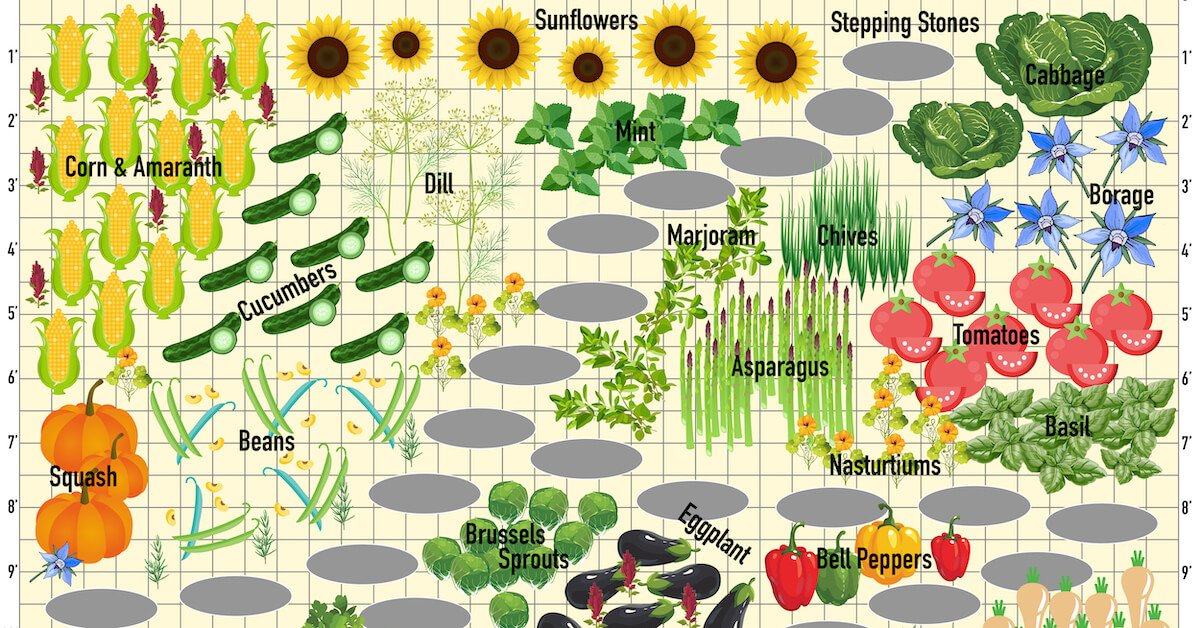How To Create A Companion Planting Chart For Vegetables

Introduction
Imagine your garden as a bustling community where every plant has a role to play. Some plants are natural allies, working together to create a harmonious ecosystem. This is the essence of companion planting—a practice that can transform your vegetable garden into a thriving, self-sustaining haven. In this article, we'll guide you through the process of creating a companion planting chart for vegetables, ensuring you maximize plant compatibility, optimize your garden layout, and embrace the principles of organic gardening. Let's dive in!
Understanding Companion Planting
What is Companion Planting?
Companion planting is the practice of planting different crops in close proximity to enhance growth, improve soil health, and deter pests. It's akin to creating a well-balanced team where each member brings unique strengths to the table. By strategically pairing plants, you can create a garden that is not only beautiful but also highly productive and resilient.
Benefits of Companion Planting
- Improved Soil Health: Certain plants can enhance soil nutrients, making them more available to their neighbors.
- Pest Control: Some plants naturally repel pests, while others attract beneficial insects that prey on garden pests.
- Space Efficiency: By interplanting, you can maximize your garden space, making it more productive.
- Enhanced Flavor: Certain plant combinations can even improve the taste of your vegetables.
Creating Your Companion Planting Chart
Step 1: Research Plant Compatibility
The first step in creating your companion planting chart is to research which plants work well together. Some plants are natural allies, while others are adversaries. For example, tomatoes and basil are a classic pairing, with basil repelling pests that might otherwise harm the tomatoes. On the other hand, potatoes and tomatoes should be kept apart to avoid the spread of blight.
Step 2: Determine Your Garden Layout
Once you have a list of compatible plants, it's time to plan your garden layout. Consider factors like sunlight, water requirements, and space needs. A well-designed garden layout can optimize growth and minimize the spread of diseases.

Step 3: Incorporate Crop Rotation
Crop rotation is a key principle in organic gardening. By rotating your crops, you can prevent the depletion of soil nutrients and reduce the risk of pests and diseases. Plan your companion planting chart with crop rotation in mind, ensuring that you don't plant the same crops in the same spot year after year.
Step 4: Create Your Chart
Now that you have all the necessary information, it's time to create your companion planting chart. Use a simple grid or table to list your vegetables and their compatible and incompatible companions. Here's a basic example to get you started:
| Vegetable | Compatible Plants | Incompatible Plants |
|---|---|---|
| Tomatoes | Basil, Marigolds, Carrots | Potatoes, Fennel |
| Carrots | Tomatoes, Onions, Radishes | Dill, Parsnips |
| Lettuce | Carrots, Radishes, Spinach | Parsley, Cabbage |
Step 5: Implement and Monitor
With your chart in hand, it's time to put your plan into action. Plant your vegetables according to your chart and monitor their growth. Keep a garden journal to note any observations, such as improved growth, pest control, or unexpected issues. This will help you refine your companion planting chart over time.
Tips for Successful Companion Planting
Start Small
If you're new to companion planting, start with a small section of your garden. This will allow you to experiment and learn without overwhelming yourself.
Be Flexible
Companion planting is not an exact science. Be open to adjusting your plan based on your observations and the specific needs of your garden.
Use Companion Plants Strategically
Don't just focus on vegetables. Incorporate flowers and herbs that can attract beneficial insects and repel pests. Marigolds, for example, are known for their pest-repelling properties.

Rotate Your Crops
As mentioned earlier, crop rotation is crucial for maintaining soil health and preventing pests and diseases. Plan your companion planting chart with rotation in mind.
Keep Learning
Companion planting is a continuous learning process. Stay updated with the latest research and experiment with new plant combinations to see what works best for your garden.
Conclusion
Creating a companion planting chart for vegetables is a rewarding journey that can transform your garden into a thriving ecosystem. By understanding plant compatibility, planning your garden layout, and incorporating crop rotation, you can maximize the benefits of companion planting. Remember, the key to success is to start small, be flexible, and keep learning. Your garden will thank you for it!
FAQs
What are some common companion planting pairs?
- Tomatoes and basil, carrots and onions, lettuce and radishes are some common companion planting pairs.
Can I plant potatoes and tomatoes together?
- No, potatoes and tomatoes should not be planted together as they are both susceptible to blight, which can spread easily between them.
How does companion planting help with pest control?
- Companion planting helps with pest control by using plants that naturally repel pests or attract beneficial insects that prey on garden pests.
Why is crop rotation important in companion planting?
- Crop rotation is important in companion planting to prevent the depletion of soil nutrients and reduce the risk of pests and diseases.
What should I do if my companion planting chart doesn't work as expected?
- If your companion planting chart doesn't work as expected, be flexible and adjust your plan based on your observations. Keep a garden journal to note any issues and refine your chart over time.
By following these steps and tips, you'll be well on your way to creating a successful companion planting chart for your vegetable garden. Happy gardening!
0 Response to "How To Create A Companion Planting Chart For Vegetables"
Post a Comment